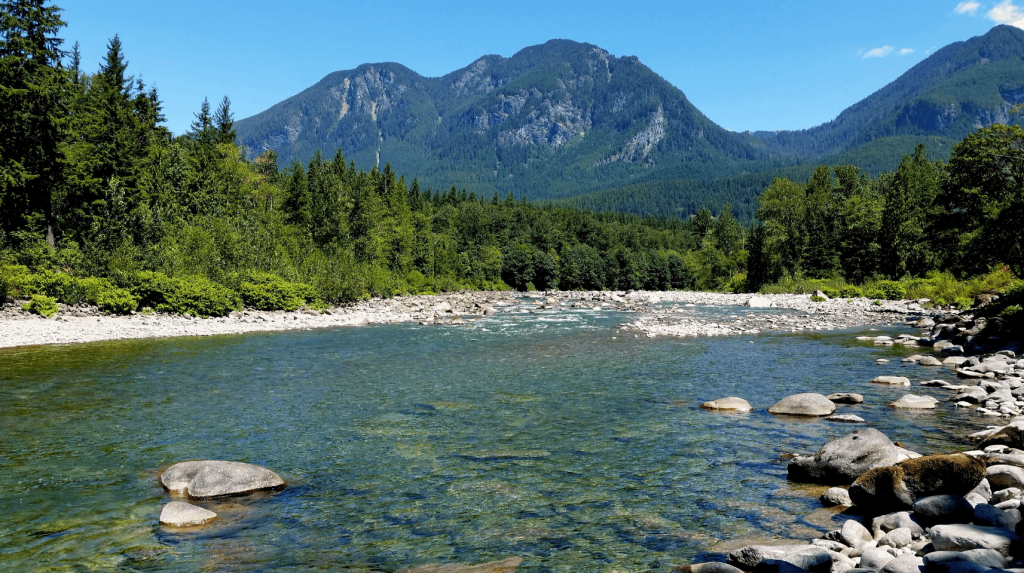Chance To Comment On WDFW-Tulalip Skykomish Summer Steelhead Proposal
Federal overseers are asking the public for what they think about a proposed Skykomish hatchery summer-run steelhead program that would utilize natural-origin fish from the river’s South Fork.
It’s essentially a do-or-die bid for the future of consumptive steelheading as we know it on the popular Puget Sound system.

The fish would replace out-of-basin Skamania-strain steelhead that are being phased out of production at the strong urging of the National Marine Fisheries Service and also as a result of a lawsuit settlement with Wild Fish Conservancy last year.
As part of a broader review, NMFS is first looking for comment through mid-January on WDFW and the Tulalip Tribes’ hatchery genetic management plan, or HGMP.

Submitted in 2019, it calls for the annual release of up to 116,000 smolts, primarily at Reiter Ponds but also possibly the nearby Wallace River and North Fork Skykomish.
What’s unique is that it would use in-basin steelhead that since 1958 have been collected at a fish trap upstream of Index and trucked around impassable Sunset Falls to utilize spawning and rearing habitat in the South Fork’s headwaters.
The effort aims to support tribal treaty rights, help supplement the recovery of listed steelhead elsewhere in the Skykomish watershed and provide summer-runs for state fisheries.
It is also a key part of WDFW’s so-called QuickSilver Portfolio, a collaborative, multistakeholder approach that applies a mix of steelhead management strategies in Puget Sound rivers, where harvest opportunities are a shadow of what they once were as habitat issues and Endangered Species Act listings came home to roost and the Skykomish represents the last best hope.
But in what is termed “perhaps the Wild Fish Conservancy’s most shameful lawsuit yet” in an upcoming Northwest Sportsman article, the Duvall-based organization earlier this month announced it was going to sue WDFW for allegedly “capturing and killing wild summer steelhead” for the program without a federal permit.
Unlike other stocks in the Snohomish-Skykomish-Snoqualmie watershed, South Fork summer-runs are not considered to be a demographically independent population.
They’re the offspring of long intermixing of hatchery and wild fish that were allowed to colonize the upper watershed and actually aren’t even listed under ESA, making them a better candidate for an integrated broodstock program than others.
WDFW had originally considered using Tolt River steelhead for the program, but that would have been very complicated and those fish have more Skamania summer-run heritage than those from the South Fork, according to a WDFW genetic analysis.
Before issuing a permit for the program, NMFS will also perform a biological opinion and environmental assessment, scheduled for spring and summer 2021.
The feds’ comment period on this initial proposed evaluation and pending determination, or PPED, of the proposal closes Jan. 21.
You can email your thoughts to hatcheries.public.comment@noaa.gov or mail them to:
Emi Melton
Sustainable Fisheries Division, NOAA Fisheries
1201 NE Lloyd Blvd., Suite 1100
Portland, OR 97232
